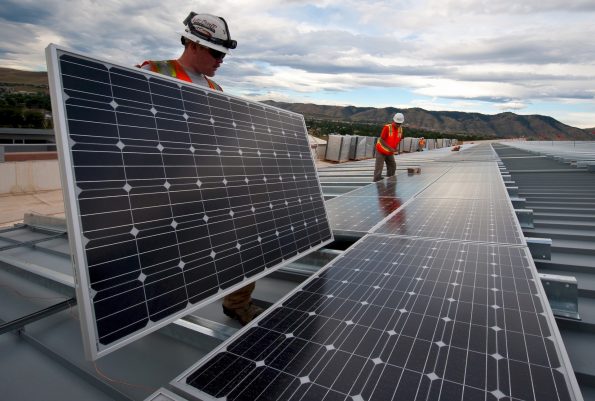In the modern era, characterized by heightened climate change awareness and an urgent call for environmental responsibility, sustainable architecture has taken center stage in the design and construction of commercial buildings. Beyond the traditional considerations of aesthetics and functionality, the architectural focus has shifted significantly towards creating structures that not only minimize their ecological footprint but also prioritize the well-being of their occupants. The integration of sustainable strategies in commercial architecture goes beyond mere tokenism; it is a conscientious effort to reduce energy consumption, enhance environmental quality, and contribute to the overall health of our planet.
Passive Solar Design
A cornerstone of sustainable commercial architecture is the implementation of passive solar design principles. This approach involves a meticulous orientation of windows, walls, and roofs to harness natural sunlight and heat effectively. By doing so, commercial buildings can significantly reduce their reliance on artificial lighting, heating, and cooling systems. Passive solar design optimizes energy efficiency, leading to considerable cost savings over time while minimizing the building’s carbon footprint. The result is a harmonious coexistence of architecture and nature, where structures seamlessly integrate with their environment.

Green Roof Systems
Green roofs, adorned with lush vegetation, have rapidly gained popularity in the realm of commercial architecture. These living roofs offer a multitude of benefits, such as superior insulation, a substantial reduction in stormwater runoff, and an aesthetic transformation of urban landscapes. Green roofs counteract the urban heat island effect, contribute to improved air quality, and foster biodiversity within urban environments. In addition to their environmental advantages, they provide serene and visually appealing spaces for building occupants to enjoy.
Energy-Efficient HVAC Systems
Commercial buildings often allocate a significant portion of their energy consumption to heating, ventilation, and air conditioning (HVAC) systems. To address this issue, architects are incorporating cutting-edge, energy-efficient HVAC systems. These systems employ advanced technologies, including smart sensors and programmable thermostats, to optimize energy usage while maintaining a comfortable indoor environment. By reducing energy waste, these systems align with the principles of sustainability and responsible resource management.
Recycled and Sustainable Materials
A fundamental aspect of sustainable commercial architecture is the choice of construction materials. Architects are increasingly selecting materials that diminish the environmental impact of construction activities. These materials encompass a wide spectrum, ranging from recycled materials like reclaimed wood to steel provided by steel fabricators who know how to keep things green. Beyond their eco-friendliness, these materials lend a distinctive and visually captivating aesthetic to the architecture, making sustainability a hallmark of design innovation.
Natural Ventilation Systems
The implementation of natural ventilation systems is pivotal in achieving energy efficiency and occupant comfort in commercial buildings. Such systems harness the principles of wind flow and air circulation to regulate indoor temperatures naturally. As a result, the dependence on energy-intensive mechanical cooling systems is substantially reduced. Buildings equipped with well-designed natural ventilation systems offer not only economic benefits but also a healthier, more enjoyable indoor environment for occupants.
Solar Panels and Renewable Energy
Sustainable commercial architecture often features solar panels as prominent elements. These panels harness solar energy to generate electricity, lessening the building’s reliance on fossil fuels and reducing greenhouse gas emissions. Beyond solar panels, architects are incorporating additional renewable energy sources into their designs, such as wind turbines and geothermal systems. These measures collectively contribute to a marked reduction in the building’s carbon footprint and exemplify a commitment to clean, sustainable energy sources.
Rainwater Harvesting
Responsible water management is an integral component of sustainable commercial architecture. One of the standout practices in this regard is rainwater harvesting. Commercial buildings are now equipped with systems designed to capture and utilize rainwater for non-potable purposes, such as landscape irrigation and toilet flushing. Rainwater harvesting conserves precious freshwater resources, eases the burden on municipal water supplies, and reduces the load on wastewater treatment facilities. This sustainable practice serves as a testament to efficient water stewardship within the built environment.
Certifications and Standards
Architects and developers committed to sustainability often seek certifications and adhere to stringent environmental standards for their commercial buildings. Prominent certifications such as LEED (Leadership in Energy and Environmental Design) and BREEAM (Building Research Establishment Environmental Assessment Method) are highly esteemed within the sustainable architecture community. These certifications serve as tangible indicators that a commercial building meets specific sustainability criteria, ranging from energy efficiency and indoor environmental quality to responsible site development and resource management. Pursuing such certifications underscores a genuine commitment to environmentally responsible architecture.
The infusion of sustainable strategies into commercial architecture has fundamentally altered the landscape of the industry, propelling it toward an era defined by environmental consciousness and social responsibility. Commercial architecture is no longer merely a manifestation of human innovation; it is an embodiment of our commitment to safeguarding the planet’s natural resources and nurturing the well-being of its inhabitants. In this age of heightened environmental awareness, sustainable commercial architecture stands as a beacon of hope, illuminating

